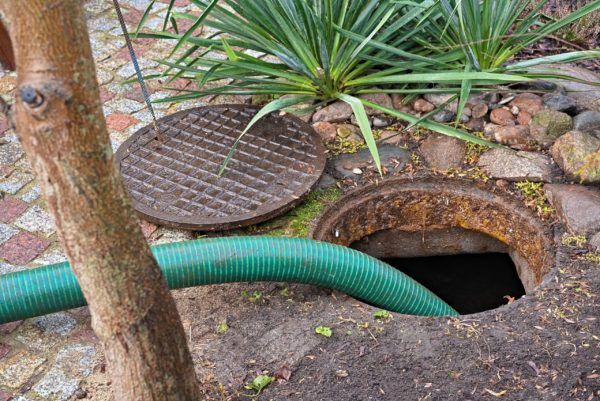How to Find Your Septic Tank: A Guide for Every Homeowner
Your septic tank is the underlying hero of your home. It’s responsible for keeping you safe from disease-causing bacteria and does its job silently. But if you’re like most people, you’ve probably never even thought about what your septic tank looks like or how it works until you have a problem.
Whether you’re having drainage issues or just want to be a proactive homeowner, it’s time to acquaint yourself with this system by finding your septic location and getting it inspected.
Introduction to Your Septic System
First things first, let’s get to know your septic system. A septic system treats household wastewater (sewage), so it can be safely released into the environment. It consists of a containment tank and a leach field.
A septic tank is a large concrete or plastic tank buried underground. The septic tank collects wastewater from the house. The bacteria in the tank digest most of the organic material in the wastewater before it flows through a pipe to a leach field.
The leach field consists of perforated pipes buried in trenches filled with gravel. The liquid then filters slowly through the rock, allowing further exposure to bacteria that clean up any remaining food particles, grease, and other contaminants before it percolates out of the soil into groundwater or surface water bodies such as lakes and streams through infiltration basins or tile drains.
How Often Should You Have Your Septic Tank Pumped?
The answer to this question depends on several factors: how many people live in your home, how much water flows into your home, how often you use appliances such as dishwashers and washing machines, and how often you have guests visit your home.
It’s recommended that homeowners have their septic tanks inspected every three years by a licensed professional who can determine if there are any problems with the tank itself or if it needs emptying sooner than expected due to overuse or misuse of the system by homeowners.
Before you can begin the search, you’ll need to know where to look for your septic tank. The location of the tank is indicated by several clues that appear on the surface of your property.
Inspect Your Yard for Signs
The first thing to do is look around your yard. The tank is generally located near the structure that uses most of the water in your home, such as a kitchen or bathroom. It’s also important to remember that septic tanks are buried several feet underground and may be covered with dirt or leaves from time to time.
Here is what to look for:
A depression in the ground. This could be a buried septic tank or drain field, especially if it’s covered with rocks or other debris (to prevent animals from digging into it). A mound above ground level. This could also be a buried septic tank or drain field (if there are no rocks) or even a mound of dirt that was moved when the trench was dug and covered with grass seed afterward. A small pipe coming out of the ground near your home and leading into it (usually near a floor drain) that’s capped with cement or otherwise hidden from view.
Ask a Friend or Neighbor for Help
If you’re not sure where your septic tank is located, ask a friend or neighbor for help. If they have had their tank pumped, they may know where the tank should be and can help guide you to it. It also helps to have a second pair of eyes in case you overlook something.
Follow the Direction of the Waste Pipe
If you’re not sure about the exact location, another method is to follow the drainpipes leading away from your home. The pipe that carries wastewater from your home to your septic tank has two ends. One end attaches to a sewage ejector pump, which pumps wastewater into a sewer system. The other end attaches to your septic tank itself.
To find the septic tank, go outside to the spot where the pipe appears and walk directly away from the house. Drainpipes are usually laid in straight lines. Look around this area for signs of the septic tank.
Use a Metal Detector
A metal detector can detect buried objects as deep as 6 feet below ground level and can detect items several feet away from its location.
To locate your septic tank with a metal detector, carefully sweep the area with the device while listening for any sounds of change in pitch or volume. If you hear a loud signal when sweeping over one spot, it means there’s something buried there. Digging up this spot should reveal the lid to your septic tank.
Consult Local County Records
If you’re lucky enough to have access to local country records, they may hold the answer. Check the deeds of your property or any associated land in the area, as well as survey maps from when it was first built. You can also look up any permits that have been granted for alterations or additions.
Check With Your Contractor
If you’re having work done on your home, it’s worth asking the contractor if they know where your septic tank is located. They may be able to point you in the right direction or have records of where it was installed.
Call a Septic Maintenance Service
Septic tanks can last up to 20 years if they’re properly maintained. If you have questions about how long your septic system has been in place or where to find it, contact a professional septic service in the area. If you purchased an older home, a company might have records if they have serviced the tank previously.
If you’re searching for your septic tank, it’s likely because you’re experiencing problems with your plumbing or drainage (sinks with slow drains, toilet backing up, or water pooling up in your yard).
If you’ve been experiencing these problems and suspect that your septic tank may be the source of the issue, contact a septic service immediately. A licensed contractor will be able to locate and inspect your septic system and determine if it needs to be serviced or replaced, even if it is a newer home that was never serviced before.
Save Time By Calling a Local Pro
[customer_name] is a full-service septic service provider. We offer a variety of septic services to ensure that your septic system is running smoothly and efficiently. We can locate your septic tank to clean it or improve the efficiency of its operation.
The last thing you want is for your septic system to fail and leave you with a huge mess on your hands. That’s why we offer prompt service that gets the job done right the first time! We also provide estimates so you know exactly how much you’re spending before we begin working on your project.
We’ve been offering septic tank pumping services in Idaho for over 15 years, so you can trust us when we say that we know what we’re doing. We will be there every step of the way as your septic pumping experts, helping you get through this process as smoothly as possible.
Contact [customer_name] in Nampa for all your septic needs!



